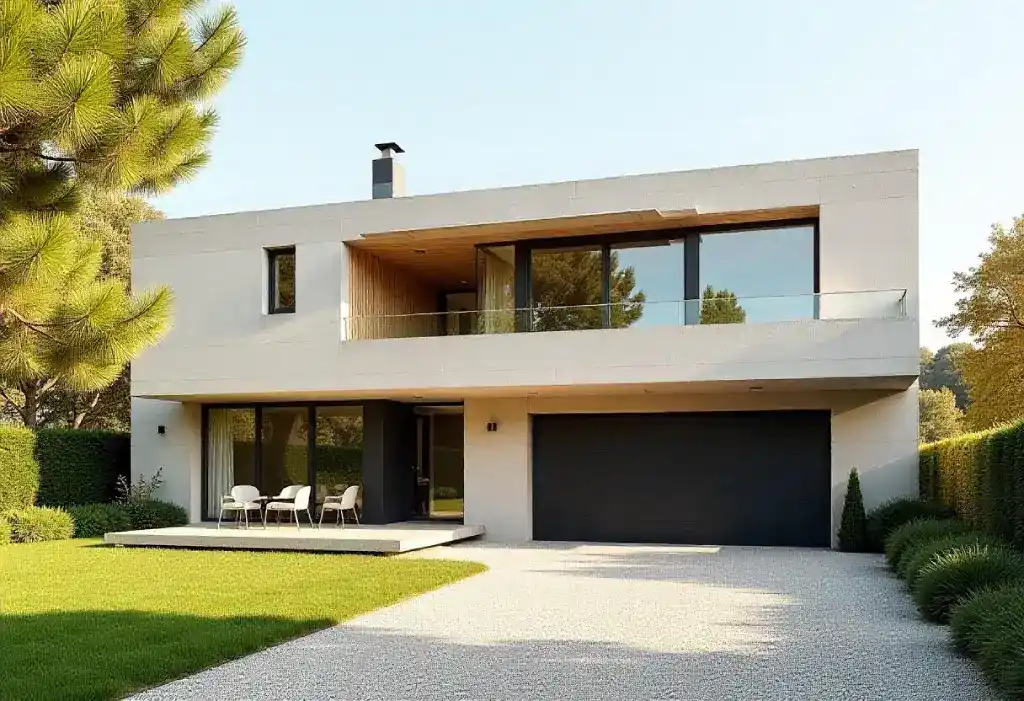The Beginnings of Modern Architecture
Modern architecture marked a turning point in the history of architectural design due to its disruptive nature, which broke away from the stylistic paradigms of its time and redefined the use of materials, as well as urban and social resources. Its current relevance is the result of a long process of historical and revolutionary transformations that developed over more than a century. To create contemporary architecture with value, it is essential to analyze and understand the movements that preceded it. This time, we will focus on the origins and evolution of modern architecture.
What is Modern Architecture?
Modern architecture is a movement born in Europe in the early 20th century that broke away from the previous historical trends in architectural design. Unlike earlier styles such as classical, gothic, or baroque, this movement eliminated ornaments and decorative structures, focusing on two essential principles: functionality and simplicity.
The main characteristics of modern architecture include clean, pure lines, where the design responds to its function, avoiding any unnecessary or extravagant elements. Geometry was simplified, with rectangular and orthogonal prism shapes predominating. Structures, instead of being hidden, became visible and integrated into the design, while glass became an iconic material, allowing the creation of large windows and translucent facades.
Moreover, interiors underwent a radical transformation: rigid spaces confined by walls were replaced by open, flexible, and interconnected areas, facilitating greater fluidity and functionality in living environments.
Where Did Modern Architecture Come From?
The origins of modern architecture can be traced back to 1919, with the founding of the Bauhaus, a German school of art, design, and architecture created by Walter Gropius. The Bauhaus building, with its simple volumes and large windows, personified the most fundamental principles of modernism: a design focused on function.
The impact of modern architecture was so profound that it gave rise to various currents and styles, each with its own characteristics:
- Functionalism: Born from modernist principles, this style became most popular in the United States, particularly through the Chicago School, led by Louis Sullivan. Functionalism prioritized the pragmatic response to the building’s needs, sidelining aesthetic considerations.
- Rationalism: Also known as internationalism, this style adopted modernist ideals in various regions of the world. Its focus was on modular repetition, typical of prefabricated elements, and the integration of the social context of each environment.
- Organic Architecture: This style advocated for harmonious integration with the natural environment. In the United States, Frank Lloyd Wright was its greatest exponent, merging “prairie architecture” with modernist principles. In Europe, Antoni Gaudí developed a unique approach centered on decoration inspired by natural forms, though distinct from modernist functionalism.
- Brutalism: Popularized in the second half of the 20th century, this style had Le Corbusier as one of its main promoters. It was characterized by the monumentality of structures and the honest use of materials like concrete, with special emphasis on facade design.
- Deconstructivism: Emerging in the 1980s, this movement broke away from modernist principles by prioritizing surrealistic and aesthetic designs over functionality.
- High Tech: In the 1970s, modern architecture incorporated technological advances visible in its design, giving rise to the high-tech style, which combined functionality with the exposure of technological elements.
Conclusion
Modern architecture was more than a style; it represented a revolution that transformed the way spaces and architectural materials were understood. Its evolution gave rise to new movements, leaving a lasting legacy that continues to inspire contemporary architects.
